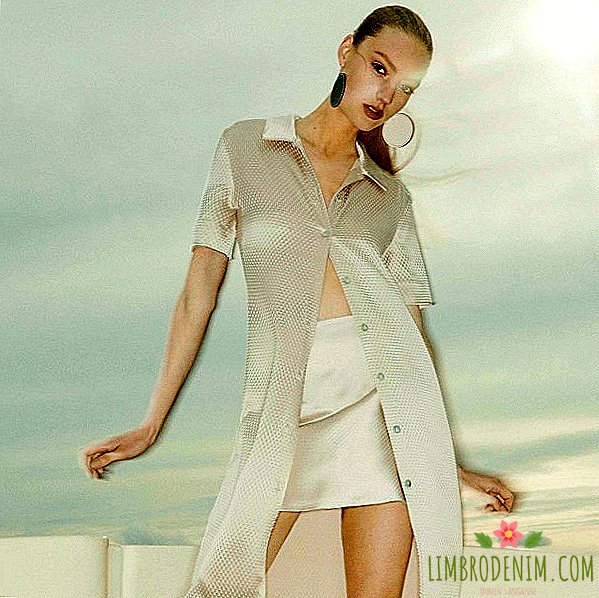"Naked parade": How athletes are divided into women and men
The Olympics in Pyeongchang will be remembered forever as a vivid example. doping scandals. The ban on drugs that can give athletes an advantage is logical and justified - but sometimes the desire to make the Games as honest and fair as possible leads to conflicting results. The controversy surrounding the “gender tests” - gender tests that have been held at the Olympics for many years in order to determine whether there are no men posing as women for women, has not yet subsided. We tell how it was done and what it led to.

Sex verification tests — or gender tests — were first conducted in 1936 at games in Berlin (these Games are also known as Hitler's Olympics). Then the American runner, Helen Stevens, was examined on the genitals. The question, in fact, was raised by the fact that the judges, as well as other participants of the competition (which she bypassed) Helen seemed too "masculine", and besides her results were "suspiciously" high. Female genitalia found, the question was removed.
However, the topic continued to be exaggerated in the press. HYIP around the gender issue led to the fact that in 1966 at the European Championships in Athletics, the first mass check of the athletes' sex was held - the so-called naked parade: all participants were forced to completely strip themselves before the judges to inspect the genitals. This humiliating procedure has caused a lot of controversy and indignation. At the same time, some sportswomen suddenly left big-time sports - for example, Irina and Tamara Press, representing the USSR and winning six gold medals. Of course, the rumors began to crawl only more intense.
In 1968, at the Summer Olympics, genetic tests were first carried out - and disqualifications began. The first woman who was not allowed to compete was the Polish athlete Eva Klobukovskaya - she was identified with mosaicism (a condition in which the cells contain not the same, but different sets of chromosomes, including XX and XY). In 1991, the previously used test for sex chromatin was replaced by PCR, which showed the presence of the SRY-gene. This gene is the basis of the Y chromosome, and it was assumed that it is responsible for the development of the organism according to the male type. But then problems arose: it turned out that a number of people have the so-called androgen insensitivity syndrome - with it, even with the Y chromosome, there will be a pronounced female phenotype.
An athlete, deprived of the opportunity to do what she loved, suffered from depression and in 2007 attempted suicide. All attempts to return the medal and rehabilitate were rejected, and petitions and complaints were rejected.
Because of the ambiguity of the results and the high cost of mandatory chromosomal tests were canceled in 1999, but left the right to question the gender identity: The International Association of Athletic Federations (IAAF) at the slightest suspicion could require a medical examination - including a gynecologist, genetics, endocrinologist , a psychologist - and analysis of hormones. If the athlete refused, she was not allowed to compete.
The story of the Indian runner Santi Sundarajan, who was deprived of a silver medal at the 2006 Asian Games and banned from competing when she “failed” hormone testing, is widely known. “My conscience is clear, I have done nothing wrong,” Santi said, being shocked by what had happened. It was suggested that the hormonal imbalance is caused by poor nutrition in childhood: the athlete grew up in a poor village in India. Despite the fact that Santi’s removal was generally mitigated (for example, by paying a cash premium), she had to return to her homeland. An athlete, deprived of the opportunity to do what she loved, suffered from depression and in 2007 attempted suicide. All her attempts to return the medal and rehabilitate were rejected, and petitions and complaints were rejected. The only thing she is allowed to do is coaching.
The story of Caster Seed, a South African athlete, made even more noise. The uniqueness of her achievements (as well as a stormy discussion of her appearance, where without it) made the International Association of Athletic Federations in 2009 provoke an investigation. The test results are not publicly announced, but the rumors spread immediately. The IAAF, meanwhile, said that the Seed has a "rare medical condition" and it is necessary to find out if it does not provide an "unfair advantage." While this figured out, the young athlete faced with the strongest pressure.

As a result, from the chromosomal point of view, Semeni turned out to be a woman, but with an unusually high level of testosterone. The press wrote that the association demanded that this level be adjusted medically, threatening not to be allowed to compete. Be that as it may, after a while, Semen was admitted, and her results became noticeably lower - and the media started talking about the fact that the athlete lowers the level of hormones in order to continue her career. The case was vigorously debated, and finally they spoke publicly and loudly about the admissibility of gender tests - what they could be, where the line between the “man” and “woman” was and what the intersex people would do in such a situation.
These peripetias led to the fact that the International Olympic Committee revised gender tests, so that in 2012 they began to carry out hormonal studies. The maximum level of androgens, acceptable for the female category, has been established. On the one hand, already in 2015, this policy allowed transgender athletes and athletes, as well as intersex people, to participate in the Olympics, in any category they chose, regardless of the transition that was carried out or not; The main thing is to match the level of hormones.
On the other hand, hormonal testing was sharply criticized, especially when it became known that some sportswomen were forced to undergo sterilization in order to reduce the naturally high level of androgens. Athlete Duty Chand filed a lawsuit with the Court of Sports Arbitration (CAS): she was disqualified in 2014 because of hyperandrogenism, but she said she did not want to follow the recommendations and adjust her testosterone level. “I want to remain who I am and take part in competitions again,” said Chand.
Hormone testing has come under heavy criticism, especially when it became known that some athletes were forced to undergo sterilization in order to reduce the naturally high level of androgens.
The Chand court won, and this decision was a turning point: the court overturned the disqualification, and also ordered the IAAF to provide scientific evidence that women with elevated testosterone have a clear advantage over other athletes - or develop other gender tests. In November 2015, the IOC abolished the rules on which testosterone level restrictions were in effect, "before the appearance of scientific justification." Until now, the new conditions of participation have not appeared, and the "gender wars" have somewhat subsided.
“I don’t understand at all why the IOC and the IAAF need such rules,” Chand repeatedly stated in an interview. And really, why? The use of tests for confirming gender, which were supposedly intended to protect the rights of athletes, has so far led only to the opposite result: dozens of damaged reputations and sports careers, humiliation in the press, public discussions of appearance. And it is women who suffer: there were no cases when an athlete at the Olympics was demanded to be checked for hormones, because he looks "too feminine." There are documented cases when biological men acted in the female category, literally a few - and most often these people came out as transgender people or turned out to be intersex. Explicit fraud has never happened.
CAS issues and solutions, no matter how modern and tolerant it may be. “Despite the fact that all sporting events are clearly divided into male and female categories, the gender of a person is not so binary,” said the Chand trial. “However, since there are separate categories of male and female competition, the IAAF needs to formulate the basis of division. athletes on men and women. " To recognize that gender and gender are not divided into two, normal. But a complete rejection of a clear-cut division of the competition and the transition to completely new categories (for example, just by body weight) - this, apparently, is too radical for sports.
Photo:www.olympic.org, Wikimedia Commons, celiafoto - stock.adobe.com





